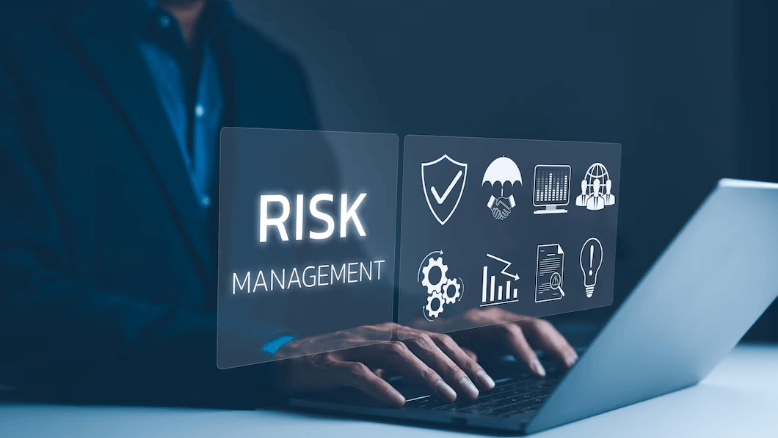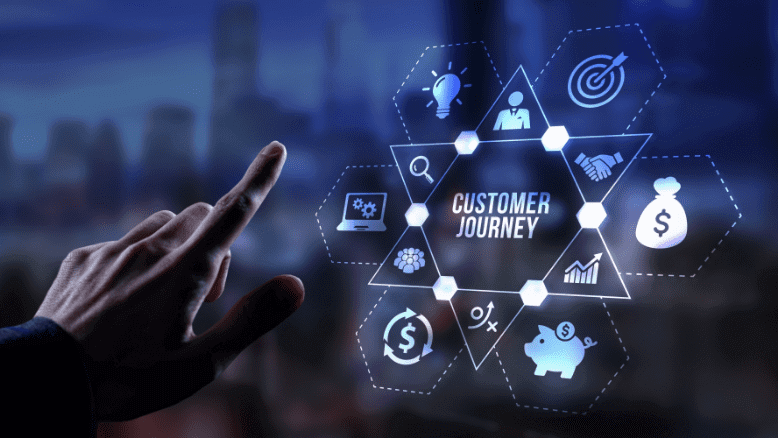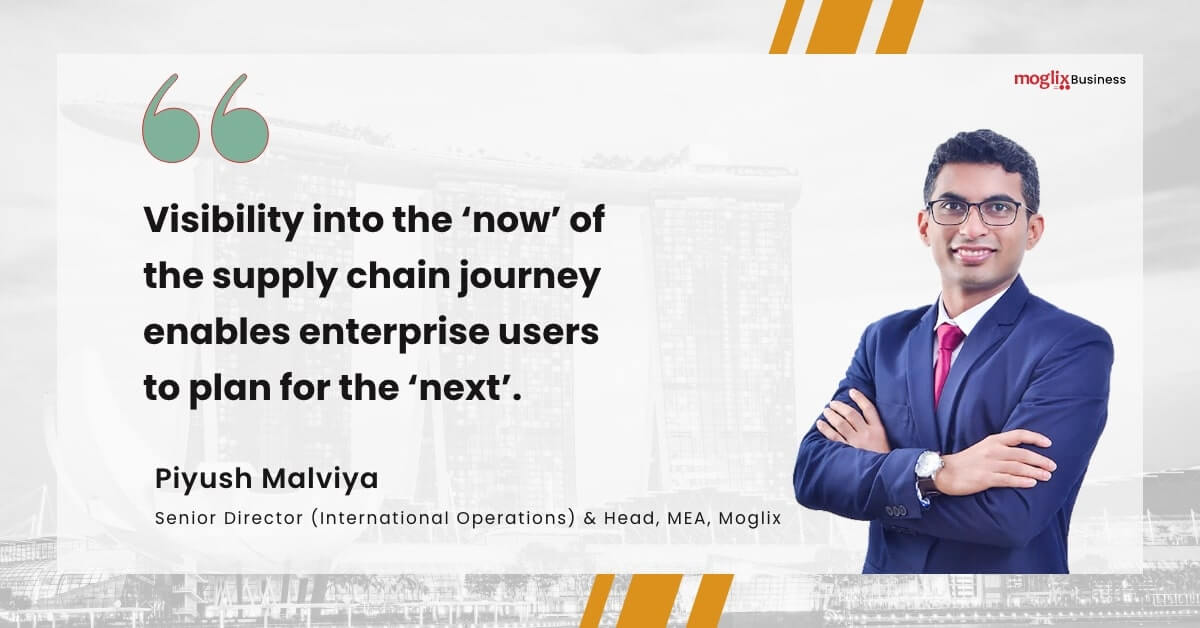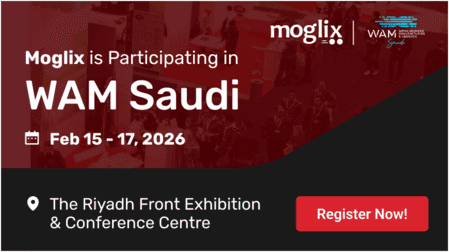The Role of MRO in Extending Equipment Lifespan: Best Practices for CPOs

The Role of MRO in Extending Equipment Lifespan: Best Practices for CPOs
In this blog, we’ll explore the essentials of MRO, its significance in extending equipment lifespan, and actionable best practices for CPOs.
What is MRO?
MRO stands for maintenance, repair, and operations.
It encompasses daily activities necessary to maintain assets like machinery, facilities, and technology systems, ensuring seamless organizational operations.
These assets often require ongoing care to stay functional, which makes MRO essential.
Beyond maintaining equipment, effective MRO management fosters strong supplier relationships to ensure the consistent availability of critical materials.
Key Aspects of MRO
To effectively implement MRO, CPOs must understand its three core components: maintenance, repair, and operations.
- Maintenance
- Involves preventive and scheduled tasks to avoid sudden breakdowns.
- Enhances overall facility performance when combined with MRO services.
- Repair
- Addresses issues in machinery or equipment that disrupt production.
- Requires internal teams or external service providers based on repair complexity.
- Quick, efficient repairs minimize downtime and financial losses.
- Includes maintaining spare parts and skilled technicians for rapid response.
- Operations
- Focuses on managing operational supplies like lubricants, PPE, and cleaning agents.
- Prevents disruptions through proper inventory management.
- Ensures high-quality supplies for safety and efficiency.
- Streamlines procurement processes to control costs and support productivity.
The Role of MRO in Extending Equipment Lifespan
MRO significantly contributes to extending equipment lifespan, ensuring long-term operational benefits for organizations. Here’s how:
- Empowering Sustainability Goals: MRO aligns with sustainability efforts by extending asset life, reducing waste, and ensuring efficient resource use.
- Saving Costs: By preventing major breakdowns and minimizing unplanned repairs, MRO helps organizations save on expensive replacements and lost production time.
- Scheduling Timely Repairs: Through MRO, quick action on repairs minimizes stress on other components, preventing further damage.
- Using Quality Supplies: High-quality MRO tools and consumables enhance machine performance and prevent premature wear and tear.
By focusing on MRO, CPOs can ensure equipment operates at peak efficiency, extending lifespan.
Best MRO Practices for Every Industry CPOs
To maximize the benefits of MRO, here are some actionable best practices tailored for CPOs:
- Develop a Proactive Maintenance Plan- Conduct regular inspections and preventive maintenance using IoT-enabled devices to predict failures. Maintain detailed logs to track and refine processes.
- Build Supplier Relationships- Collaborate with suppliers to secure high-quality MRO supplies.
Negotiate contracts for consistent pricing and reliable services. Outsource specialized MRO services when needed.
- Invest in Digital Tools- Use procurement technology to streamline MRO processes. Leverage procurement automation for efficient inventory tracking and ordering.
Implement digital procurement solutions to enhance transparency and control.
- Train and Engage Teams- Equip employees with the knowledge and skills to handle MRO activities efficiently.
Engaged teams can identify potential issues early and ensure smooth implementation of MRO strategies.
- Evaluate and Adapt- Regularly evaluate MRO practices to identify improvements. Adjust strategies to align with industry-specific demands and evolving business requirements.
Summing Up
For Chief Procurement Officers (CPOs), MRO extends beyond routine maintenance—it’s a strategy to enhance operational efficiency and achieve significant cost savings.
By prolonging equipment life span through preventive maintenance practices and efficient procurement strategies CPOs can incorporate industry best practices to optimize asset utilization.
Implementing strategies such as maintenance scheduling and utilizing modern digital tools along with smart inventory management are key elements for maintaining smooth operations and achieving sustainable success in the long run.
The integration of MRO capabilities serves as a move toward establishing a cost-efficient organization that is well-prepared for the future.
How Moglix Can Transform Your MRO Strategy
Moglix simplifies MRO procurement by reducing costs and boosting efficiency. With advanced features like real-time analytics and AI-powered recommendations, it empowers CPOs to make smarter, data-driven decisions.
Moglix empowers you to analyze spending patterns, optimize supplier performance, and manage inventory efficiently, helping you forecast demand and achieve long-term growth. For inquiries, please reach out to us at emea@moglixbusiness.com .
Top Reasons for Supply Chain Disruptions and How CTOs Can Overcome

Top Reasons for Supply Chain Disruptions and How CTOs Can Overcome
As per the reports of Reuters, in 2022, supply chain disruptions led to an average of $82 million in annual losses per company. What does this mean for CTOs of manufacturing enterprises?
From the ongoing rising geopolitical tensions to raw material shortage and the unpredictable effects of climate change, it’s important to understand what’s causing these challenges.
Understanding the primary causes of disruptions can help you plan ahead of time and develop effective risk management strategies.
Furthermore, using technology may enhance your supply chain, ensuring that your operations stay resilient and adaptive even when times are rough.
Major Causes of Supply Chain Disruptions
Supply chain disruptions can erupt from all sorts of places, impacting businesses in any and every industry.
For CPOs, knowing these main causes is key to building resilience and effectively dealing with challenges when they arise.
- Act of God – Natural disasters such as hurricanes, earthquakes, and floods have long disrupted supply lines, causing infrastructure damage.
- These so-called ‘acts of God’ incidents frequently cause product delivery delays and expense increases.
- Act of Human – Political conflicts can cause significant disruptions in supply lines. Political conflicts have the potential to seriously disrupt supply systems.
Tariffs on Chinese products, for example, increased expenses for corporations such as Apple during the US-China trade war, prompting them to seek alternative suppliers.
Similarly, sanctions against Russia resulted in abrupt shortages of critical supplies for several European enterprises.
- Labor Shortages – Labor shortages have emerged as a critical challenge, particularly during and after the COVID-19 pandemic.
Many businesses face difficulties in finding skilled workers, which can slow down production and delivery processes.
- Raw Material Shortages – A persistent shortage of raw materials is disrupting manufacturing across various sectors.
These shortages can stem from supply chain inefficiencies, increased demand, or geopolitical factors.
- Shifting Consumer Behavior – Changes in consumer purchasing patterns can lead to inventory imbalances.
The pandemic saw a surge in online shopping, leaving retailers struggling to manage excess inventory when demand shifted back to pre-pandemic levels.
The Role of Technology in Mitigating Risks
To navigate these complexities, CPOs must leverage technology to build more resilient supply chains.
Here are some key areas where technology can make a significant impact:
- Enhanced Supply Chain Visibility – Implementing tools that provide real-time visibility into supply chain operations is crucial.
Technologies such as IoT sensors and RFID tags enable businesses to track shipments and monitor inventory levels, allowing for proactive decision-making.
- Advanced Analytics – Utilizing data analytics can help CPOs identify potential disruptions before they occur.
Predictive analytics tools can analyze historical data and current market trends to forecast demand and potential supply chain issues, enabling companies to adjust their strategies accordingly.
- Scenario Planning – Scenario planning software allows CPOs to model different disruption scenarios and assess their impact on supply chain operations.
This proactive approach enables organizations to devise contingency plans and adapt quickly to unforeseen challenges.
- Automation and AI – Integrating automation and AI into supply chain processes can enhance efficiency and reduce the reliance on human labor.
Automated systems can streamline order processing, inventory management, and logistics, minimizing delays caused by labor shortages.
- Collaboration Platforms – Technology can foster collaboration among various stakeholders within the supply chain.
Platforms that facilitate communication and information sharing between suppliers, manufacturers, and logistics providers can enhance responsiveness and adaptability.
Way forward for CPOs
Understanding the root causes of supply chain disruptions is essential for CPOs aiming to navigate today’s complex landscape.
By leveraging technology to enhance visibility, analytics, and collaboration, businesses can build more resilient supply chains that can withstand challenges.
Embracing these strategies not only mitigates risks but also positions organizations for success in a rapidly evolving market.
Moglix has been, for almost a decade, working with organizations to mitigate the supply chain risks in India and the UAE.
With our integrated procurement SaaS Solution, working capital solutions, catalog-based buying solutions, prequalified 20K+supplier base combined with ever evolving state-of-the-art physical warehouse network we have been helping organizations to start building long-term resilience into their supply chain.
Discuss your digital transformation project with Moglix
How CPOs Reduce Manual Efforts with Supply Chain Automation and SaaS Products

How CPOs Reduce Manual Efforts with Supply Chain Automation and SaaS Products
As a Chief Procurement Officer (CPO), your days are likely packed with meetings, supplier calls, and never-ending lists of chores.
With so many demands on your time, it’s critical to discover solutions to simplify your work. One of the finest solutions is to use supply chain automation
What Is Supply Chain Automation, Anyway?
Simply put, supply chain automation is the use of technology to handle repetitive tasks that do not require significant human intervention. This could comprise activities like order processing, inventory management, demand forecasting etc.
You can save time and minimize errors by automating these activities.
“Consider how much more productive your day could be if you didn’t have to manage excel sheets after excel sheet to maintain inventory or to process orders manually. “
Automation allows you to save time and focus on critical decisions that will help your firm develop.
SaaS: The New Normal for Supply Chain Automation
It’s difficult to emphasize how significantly SaaS products have altered the landscape for enterprises. These cloud-based technologies have grown in popularity due to their flexibility and affordability.
They address numerous aspects of the supply chain, making it easier for businesses to monitor performance and manage their resources.
Moglix Business, a supply chain-focused SaaS solution provider in the UAE, supports CPOs at every stage of the supply chain journey, from procurement to inventory and logistics management.
With real-time data at their disposal, CPOs can make quick judgments and predict the future.
Imagine being able to monitor the performance of your suppliers as well as your stocks in one place. This makes it easier to identify trends and adjust your strategies as necessary.
Benefits of Supply Chain Automation and SaaS
Efficiency: By automating common, repetitive procedures, CPOs can save resource time on manual processes. Which will result in speedier order fulfillment, increased inventory accuracy, and a more responsive supply chain.
Cost Savings: Automation lowers labor expenses and reduces errors, which can lead to expensive blunders.
SaaS solutions often work on a subscription model, which can be less costly than traditional software, especially for smaller enterprises.
Transparency: Many SaaS platforms make it easy for teams, suppliers, and customers to communicate and collaborate.
This transparency helps keep everyone on the same page, which means fewer delays and misunderstandings. When everyone knows what’s going on, things run a lot smoother.
Scalability: As businesses grow, controlling the supply chain can become increasingly intricate, making manual methods difficult to maintain.
SaaS solutions are designed for flexibility and can readily adjust to your changing requirements. This implies you can adapt to variations in demand without investing heavily in new infrastructure. It’s all about ensuring that your firm can scale seamlessly as it grows.
Insights: SaaS solutions give you access to valuable data insights.
As a CPO, you can use performance indicators to spot areas that need improvement, streamline processes, and make smart decisions based on what you’ve learned in the past.
It’s all about using the right information to drive your strategy forward.
Supply Chain Automation Is a Need, not a Want
For CPOs, using supply chain automation and SaaS products isn’t just a trend; it’s a smart move.
By cutting down on manual tasks and simplifying operations, CPOs can work more efficiently, save money, and make better decisions that help their organizations grow.
As the supply chain world keeps changing, those who embrace these technologies will be in a stronger position to succeed in a competitive market.
Investing in automation and SaaS solutions allows CPOs to create agile and efficient supply chains that rely on data. This leads to a healthier bottom line and a more resilient organization overall.
Moglix Business has been leading the charge in digital transformation for almost a decade, both in India and the UAE.
Our smart procurement solutions—like Integrated Procurement SaaS, Automated Workflows, and Catalog-Based Buying—combined with their top-notch warehouse network, are revolutionizing how businesses handle procurement.
From ERP to SaaS: What’s Next for CTOs in Manufacturing Supply Chain

From ERP to SaaS: What’s Next for CTOs in Manufacturing Supply Chain
As a CTO, you’ve probably seen the excitement around OpenAI’s recent GPT-o1 launch. It’s a clear sign of just how fast technology is moving.
Back in 1999, Salesforce’s Marc Benioff shook things up by moving business software to the cloud, challenging the traditional on-premises systems.
ERP systems were the go-to for managing everything for businesses from data heavy finance departments to process driven supply chain departments.
But as technology evolved, Software-as-a-Service (SaaS) came along, offering even more flexibility and efficiency and now, with tech moving forward, CTOs are facing new challenges and opportunities that go beyond what SaaS can offer.
In this blog, we’ll explore what’s next for CTOs as we move into a world beyond SaaS in today’s tech enabled manufacturing supply chains.
SaaS Dilema for CTOs
Technology typically advances in cycles, following an S-curve in which innovations grow, peak, and then level off.
SaaS has already made a huge impact by moving us from on-premise systems to cloud-based solutions. However, it’s now hitting its growth limits and bringing new challenges.
While SaaS was meant to simplify operations, it has introduced its own set of complexities, like managing a growing number of subscriptions, handling data, and controlling user accounts.
CTOs are now dealing with issues that were once common in the on-premise era, such as complicated cancellations, misleading pricing, and charges for unused seats.
This shows that a new approach is needed as companies transition from using individual SaaS tools to relying on them entirely.
The focus now must be on controlling costs, optimizing data management, and preparing for the next wave of technological advances.
AI-Powered Solutions
Looking ahead, AI is set to revolutionize software in ways we haven’t seen before. SaaS changed everything by moving us from old-fashioned software to something much more flexible.
But AI is about to take that transformation even further. With AI, SaaS is getting personal.
It learns from what you do and adapts to fit your needs in real-time. Imagine software that doesn’t just react to your commands but understands what you want and improves itself automatically.
AI also introduces smart systems that get better on their own. They handle problems, improve performance, and even predict what you might need next, all without needing human input.
And because AI can analyze future trends, businesses can make smarter decisions based on what’s coming, not just what’s happened.
So, what’s next after SaaS? We’re heading towards AI-powered solutions that keep evolving with your feedback. Instead of static software, we’ll see systems that grow and adapt.
Moglix Business is already embracing this future with AI-driven solutions for procurement and supply chain automation.
Way Forward for CTOs
Switching from ERP to SaaS has already shaken up how businesses run, but we’re on the edge of even bigger changes. With decentralized systems and AI-driven platforms coming into play, CTOs need to stay sharp and ready to adapt.
The trick is to stay ahead of the curve and embrace these new trends.
Moglix Business has been leading the charge in digital transformation for almost a decade, both in India and the UAE.
Our smart procurement solutions—like Integrated Procurement SaaS, Automated Workflows, and Catalog-Based Buying—combined with their top-notch warehouse network, are revolutionizing how businesses handle procurement.
5 Margin Multipliers for CFOs in Manufacturing to Protect Gross Margin Levels

5 Margin Multipliers for CFOs in Manufacturing to Protect Gross Margin Levels
Are you a CFO in manufacturing grappling with the relentless challenge of margin erosion? You’re not alone.
Margin erosion isn’t mythical, it’s a real and pressing issue that can silently bring even the strongest manufacturing operations to a grinding halt.
Margin erosion is the gradual decline in gross margin that can slowly undermine your company’s financial stability if left unchecked.
In today’s fast-moving business environment, where everything from supply chain complexity to market volatility is constantly shifting, understanding and addressing margin erosion is crucial.
It’s not merely a financial metric but a reflection of how well your business can adapt to changing conditions and maintain profitability.
Why does Margin Erosion happen?
To effectively combat margin erosion, we need to understand what it is and what causes it.
When the difference between sales and the cost of goods sold (COGS) gets smaller over time, it is called margin erosion. But why does it happen?
- Pricing Pressure: When competitors aggressively cut prices, it can force your hand to lower prices as well, leading to reduced margins. It’s a constant battle to balance competitive pricing with profitability. Intense competition can lead to pricing wars, reducing your gross margins.
- Cost Increases: Rising costs for raw materials, labor, and other inputs directly impact margins. Inflation and increased operational expenses mean that every dollar spent reduces the margin between costs and revenue.
- Inefficient Operations: When inventory isn’t managed well and resources are wasted, operational costs can skyrocket. Often, these inefficiencies go unnoticed until they become a huge financial burden.
A study from McKinsey found that companies using digital tools can boost production by 10% to 30%.
- Changing Customer Preferences: The market’s preferences can shift quickly. If your product lineup doesn’t adapt to these changes, you risk becoming irrelevant, which affects your ability to maintain healthy margins.
As consumer demands shift, manufacturers must adapt. An Accenture research reveals that 64% of consumers wish companies would respond faster to meet their changing needs.
Add economic downturns, fluctuating currency rates, and evolving state of regulations to the above challenges and you are in the midst of a perfect storm. You are often introduced to unforeseen costs and operational challenges, squeezing margins further.
How can CFOs combat Margin Erosion?
To tackle margin erosion effectively, CFOs in manufacturing should focus on these strategies:
- Gross Margins & Sales Rewards: Let’s start by making gross margins the heart of your sales rewards program. They should be the first thing you see on sales reports and the guiding star for compensation plans.
When margins take center stage, your team knows what truly drives success. Burying them at the bottom is a missed opportunity. Tie commissions and bonuses directly to margin goals, as this keeps profitability not just a priority but the priority.
- Cost Optimization and Efficiency: This strategy is not new but is unmissable. Reducing operational costs is crucial.
For instance Nucor, a leading steel producer has implemented a highly efficient mini-mill production process to keep things efficient by using electric arc furnaces to melt scrap steel, which is a lot cheaper than traditional blast furnaces.
This smart move, along with just-in-time inventory management, helps Nucor stay profitable.
- Take control of Inventory: Inventory management is crucial for your company’s financial health. Holding too much inventory can tie up cash, leading to liquidity issues and eating into your profits.
An “Open to Buy” program is a great tool for this. It helps you manage your spending, ensuring you clear out old stock before adding new items. This keeps you from buying too much and keeps your cash flow on track.
- Indirect spends directly impact Margins: Take a close look at every line in your general ledger; knowing exactly where your money goes, whether it’s for consultants, marketing, shipping, or maintenance fees is crucial.
Forming a committee to review these expenses quarterly can help keep everything in check. You can also partner with E2E supply chain automation & procurement automation solution providers like Moglix.
Moglix through its award-winning cloud SaaS platform and catalog-based buying model can give you better visibility into indirect spending and speed up your digital transformation journey at a rapid yet sustainable pace.
- Artificial Intelligence will drive efficiency: According to a survey published on Forbes.com, nearly two-thirds of CFOs (65%) are integrating AI into their long-term strategies, yet many are still figuring out how to use it effectively.
For CFOs, AI can be a game-changer in safeguarding gross margin. Using predictive analytics lets you foresee market changes, so you can tweak your pricing or inventory as needed.
Interestingly, though these tools offer great benefits, only 49% of CFOs feel “very knowledgeable” about generative AI as per the above-mentioned survey.
So, we’ve covered some key strategies to fight margin erosion. But let’s be honest—CFOs in manufacturing are already familiar with some other common tactics.
We’re not going over the basics like product mix optimization, value-based pricing, risk management strategies, supplier relationships, or dynamic pricing.
You’re already familiar with those. These are solid strategies you likely use already.
Staying Ahead in the Margin Game
As we move forward, CFOs in manufacturing must embrace a proactive approach to combat margin erosion. This means staying flexible, using new technology, and adjusting to market changes.
By encouraging a culture of innovation and teamwork, CFOs can protect their margins and turn challenges into growth opportunities. The future is for those who can foresee changes and adapt quickly.
Moglix’s integrated procurement saas solution, automated workflows, and catalog-based buying solutions, combined with its state-of-the-art physical warehouse network could be a “one ring to rule them all” partner for CFOs in manufacturing.
Click here to know more.
4 Steps for CEOs to Mitigate Supply Chain Risks

4 Steps for CEOs to Mitigate Supply Chain Risks
You could be a CEO, a procurement officer, or a supply chain manager playing a crucial role in ensuring that every product reaches its destination smoothly and efficiently.
Yet, in the last decade many organizations were caught off guard by supply chain disruptions that resulted in billions in recalls across industries like pharmaceuticals, electronics, automotive etc.
These disruptions also resulted in delays and incomplete deliveries, because of which industry-wide OTIF rates have suffered, further straining customer relationships and operational efficiency.
CEOs now know that they can’t afford not to prepare for a potential disruption. The key is to build resilience now, not after the next crisis hits. Here’s how:
Understand Your Supply Chain Risks
Known Supply Chain Risks: These are predictable and manageable, such as the risk of a supplier going bankrupt, which can be determined by looking at their financial situation.
Cybersecurity threats can also be quantified using advanced systems that analyze IT infrastructures.
Unknown supply chain risks: These are wild card events that are random, highly improbable events that have enormous impact.
Mathematician and philosopher Nassim Nicholas Taleb termed such events as “black swan” events.
A surprise natural calamity or an undiscovered cybersecurity risk might impair your supply chain. While predicting them is difficult, you may mitigate their impact by instilling a culture of alert and preparedness.
Build a Risk-Monitoring Operation
Invest in advanced supplier risk management. Create a team equipped with AI-powered tools to monitor risks across your entire supply chain, from direct suppliers to the deepest tiers.
Consider risks from operational, financial, and geopolitical angles. Use data to track key risk indicators (KRIs) and plot these risks on a matrix to guide your response.
Simplify Your Product Portfolio
In our quest to meet every consumer’s desire, we’ve overcomplicated our product lines. It’s time to streamline. Simplify designs, standardize components, and reduce the number of suppliers.
This not only cuts costs but also minimizes risk. Moreover, reducing product complexity can alleviate working capital crunch by lowering inventory levels and decreasing overhead costs.
Take Control of Your Supply Chain
Reevaluate your make-or-buy strategies. Invest in digital technologies like 3D printing. Consider reshoring or near-shoring manufacturing to reduce dependencies.
Follow Tesla’s lead—design and make critical components in-house to ensure supply chain integrity. Strengthen financial resilience to withstand credit crunch situations by maintaining a healthy balance sheet and diversified funding sources.
Are You Prepared for the Next Crisis?
Preparing for the next crisis might seem daunting, but it’s essential. The CEOs who act now will not just survive—they’ll thrive in a post-crisis world.
Global supply chains and their inherent risks are here to stay. By embracing proactive risk management and fostering a culture of resilience, we can turn challenges into opportunities for innovation and growth.
Moglix has been, for almost a decade, working with organizations to mitigate the supply chain risks in India and the UAE.
With our integrated procurement SaaS Solution, working capital solutions, catalog-based buying solutions, prequalified 20K+supplier base combined with ever evolving state-of-the-art physical warehouse network we have been helping organizations to build start building long-term resilience into their supply chain.
Why Are CPOs Increasingly Looking to the Cost-to-Serve Model to Enable Profitable Growth?

Why Are CPOs Increasingly Looking to the Cost-to-Serve Model to Enable Profitable Growth?
We are living in a disrupted globalized world and as a Chief Procurement Officer (CPO) managing a profitable procurement department, you’re navigating through numerous supply chain disruptions over the past five years.
Events such as Covid-19, the Ukraine War, the Suez Canal blockage, and the recent Israel-Hamas conflict have posed significant challenges for businesses, impacting their financial health. Cutting costs remains more crucial than ever, but it’s also more complex.
Traditionally, supply chain management focused on total landed costs to calculate the overall expenses of making a product.
However, this approach is now recognized as inadequate.
Costs go beyond just warehouses—they affect everything from delivering goods to customers, which can greatly influence profitability.
While companies used to prioritize reducing procurement costs, there’s now a growing awareness of the need to take a broader view.
Understanding costs in detail is essential to ensure that increased sales translate into higher profits.
To achieve this, businesses need a thorough understanding of their supply chain and how it serves their customers. This is where cost-to-serve analysis becomes invaluable
What is the Cost-to-Serve Model?
The Cost to Serve model is basically a way of figuring out all the costs involved in getting products or services to customers.
It’s not just about the obvious costs like making and delivering stuff.
It also covers things like marketing, sales, customer service, and other behind-the-scenes expenses.
This method helps businesses plan their finances better and make smarter decisions.
When companies use Cost to Serve models well, they can really see how profitable each product, customer, sales channel, and market segment is.
This helps them decide on prices, what products to offer, which customers to focus on, and where to put their resources.
The Cost-to-Serve model is built on the foundation of digital transformation, leveraging advanced technologies to cover every aspect of the supply chain journey.
This includes procurement, manufacturing, distribution, and customer service.
By integrating these elements, the model ensures that all cost drivers are accounted for, providing a clear picture of the true cost of servicing each customer or market segment.
Why Does the Cost-to-Serve Model Make sense?
Enhanced Visibility and Control
The Cost-to-Serve model offers enhanced visibility into the cost structure of the supply chain.
Granular insight allows CPOs to identify high-cost areas and implement targeted strategies to reduce expenses.
With a clear understanding of cost drivers, businesses can better control their spending and improve profitability.
Data-Driven Decision Making
By leveraging detailed cost data, the Cost-to-Serve model enables CPOs to make informed decisions about resource allocation.
For instance, identifying the most profitable customer segments allows companies to focus their efforts on high-margin areas, optimizing overall profitability.
Customer-Centric Strategies
Understanding the costs associated with the entire customer journey allows companies to tailor their services to meet customer needs more effectively.
This customer-centric approach enhances satisfaction and ensures that services are delivered cost-efficiently, contributing to profitable growth.
Leveraging Digital Transformation and SaaS Solutions
Digital transformation plays a pivotal role in the successful implementation of the cost-to-serve model.
Modern البرمدة كخدمة (Software as a Service) solutions provide the advanced analytics and real-time data processing capabilities necessary for accurate cost-to-serve analysis.
These platforms automate many aspects of the supply chain journey, reducing manual effort and minimizing errors.
Data can make or break a Cost to Serve initiative
Data Sanity
Getting the data right is crucial and hence the more detailed and specific the cost data, the better the Cost-to-Serve model will be at giving insights.
A common misconception floating around is that basic data like order numbers, order details, quantities per order, picking methods, shipping types, and costs would be straightforward.
But as per the findings of a study, even in big companies with advanced ERP systems, getting good data sets is tough and often inconsistent.
Data Updates
The Cost-to-Serve model becomes more dynamic and responsive with frequent and timely data updates.
With constant changes, it’s crucial for end-users to have up-to-date information available precisely when decisions need to be made.
Updates too soon and too frequent would be impractical.
Data Integration
For a cost-to-serve model to pack a punch there needs to be a central data warehouse or an intelligent SaaS product like Moglix that can pull relevant data from multiple sources like WMS (warehouse management system), CRM (customer relationship management), and TMS (transportation management system).
Knowing exactly where the data lives and collaborating closely with end-users to figure out what’s essential for the model to guide decision-making effectively.
What do we know? What have we learnt?
The Cost to Serve model empowers supply chain leaders with timely insights to make informed decisions.
By providing a holistic view of the entire supply chain, this approach prevents unforeseen pitfalls that can disrupt profitability and team morale.
It’s about sticking to basics, staying proactive and maintaining a clear path towards sustainable success in a dynamic business environment.
Moglix for almost a decade now has been enabling organizations in India and in the UAE to achieve end to end procurement & supply chain efficiency.
Its integrated procurement البرمدة كخدمة solution, automated workflows, and catalog-based buying solutions, combines with its state-of-the-art physical warehouse network to revolutionize your business’s approach to procurement.
4 Reasons Why CIOs Are Looking Beyond ERP for Business Spend Management

4 Reasons Why CIOs Are Looking Beyond ERP for Business Spend Management
As a CIO navigating long-term transformation while juggling short-term goals, you understand how much the market has changed in just a few years.
Today, CIOs need to equip their organizations with the right tech, tools, and skills to act swiftly and harness data for immediate and lasting value creation. Balancing immediate cost cuts with future planning has become crucial.
If you can strike that balance, it’s a huge win. Business Spend Management (BSM) shines here—it’s a low-risk, cost-effective strategy that quickly benefits procurement and extends its impact across the entire business, including IT.
The primary value of BSM is that it provides an end-to-end business process across all aspects of spending.
This, in turn, empowers collaboration, improves visibility, and allows companies to move beyond some of the typical challenges that result from a siloed approach to spending.
Many organizations, of course, use their existing enterprise resource planning (ERP) systems for spend management.
Some ERP platforms offer native procure-to-pay (P2P) modules, but despite the commendable efforts of established solutions like SAP and Oracle ERP to keep up with technological advancements, they face significant challenges from emerging platforms like Moglix.
This trend is particularly noticeable in the supply chain sector, where CPOs often favor specialized tools over traditional ERP systems, even within organizations that have formally adopted ERP solutions.
Here are four reasons your ERP software falls short:
End User Adoption
CEO Spencer Fung nails it when he talks about Li & Fung’s digital makeover, highlighting that success isn’t just about technology—it’s about getting people on board with using it.
Many companies struggle with ERP systems because users resist them. ERPs are often designed for top brass and finance, leaving everyday users to maneuver and come up with patchwork.
Another challenge is ERP training, which can take a whole month—tough for supply chain managers juggling fire at multiple fronts.
Plus, the complex manual means training needs to be frequent, eating up resources and time, not to mention costs. ERP solutions often miss steps in supply chain workflows, forcing workarounds that lead to unclear reports and missing data.
And let’s not forget the sluggish and infrequent support responses, a major frustration for supply chain managers who need quick fixes from a support team that neither understands the business or the enormity of the requirement.
These issues hold back ERP use, leaving many managers stuck with outdated data.
To really take charge of your company’s resources and boost ROI, businesses need a smart add-on SaaS solution to their current ERP setup—one that’s user-friendly, so people can find what they need and get it approved easily.
This solution should simplify the procure-to-pay (P2P) process for both employees and suppliers, giving approvers real-time insights into budget impacts before they commit financially.
Success Kills Innovation
This isn’t a blanket statement, but it applies to legacy ERP systems.
They’ve been trying to keep up ever since cloud platforms emerged. To their credit, SAP and Oracle have been making efforts to adapt, releasing new cloud-based versions.
However, instead of just moving to the cloud, these legacy ERPs should have been completely rewritten.
To be fair, part of the reason they haven’t done this is because they can’t. ERPs have large, important clients who are used to the way things currently work, and making big changes can be tricky without upsetting them.
Legacy ERP systems rely on outdated technologies and architectures, limiting their ability to adapt to modern business needs and integrate with newer technologies and APIs.
Their rigid structures also make it difficult to customize or configure for unique business cases and processes.
Lacks Adaptability
ERP systems were primarily designed to handle transactional data and internal processes, focusing more on operational efficiency than on strategic functions like Business Spend Management.
As a result, they lack the specialized features needed for advanced spend analytics, indirect procurement, and real-time cost savings insights.
For instance, a retail company using an ERP system for supply chain management might face difficulties in adapting to sudden changes in supplier pricing or demand fluctuations.
Integrating new spend analytics tools or dynamic procurement processes could require extensive reconfiguration, leading to delays and increased operational costs.
This rigidity hinders the company’s ability to respond swiftly to market changes, optimize procurement, and achieve cost savings.
Deployment Cost
ERP systems can be incredibly expensive, costing millions of dollars just to purchase and deploy. To get started, companies need to buy licenses for each individual module and suite they want to use.
On top of that, integrating ERPs often means hiring consultants.
These consultants take the time to understand the business structure, recommend a new system architecture (sometimes reengineering structures and processes to align with best practices), map the old system to the new one, evaluate and clean up the available data, configure the application, and oversee the rollout.
Way Forward with Moglix
At Moglix, we’ve been at the forefront of bringing digitalization to supply chains.
It’s clear that despite all the talk about digital transformation in supply chain management, many large companies still stick to spreadsheets and isolated apps.
Forward-thinking CIOs like yourself are taking charge of overhauling outdated ERP systems. In preparing for the future, you must not just tech be innovators but also strategic partners, working closely with CFOs.
You need to strike a balance between IT’s need for flexibility and the growing complexities in finance.
It’s about embracing change to stay agile in an ever-changing business landscape.
Moglix has been, for almost a decade, leading the charge on digital transformation not just in India but also in the UAE, helping organizations in the UAE stay ahead in their digital procurement journey, with its most comprehensive procurement solution.
Moglix’s integrated procurement saas solution, automated workflows, and catalog-based buying solutions, combines with its state-of-the-art physical warehouse network to revolutionize your business’s approach to procurement. Click here to know more.
UAE’s Digital Procurement Platform is a Game Changer, Believe CPOs. Know Why

UAE’s Digital Procurement Platform is a Game Changer, Believe CPOs. Know Why
The UAE government has been considering the use of AI to solve real-world problems for the last decade, starting with the establishment of the UAE Council for Artificial Intelligence and Blockchain in 2018.
In 2021, the Ministry of Finance introduced the Digital Procurement Platform (DPP), bringing about a radical change in the procurement process by incorporating AI.
This transformative tool not only facilitates communication between federal procurement teams and suppliers but also empowers Chief Procurement Officers (CPOs) to streamline their procurement process. Currently, the platform is being expanded to include a wider range of product categories and offerings.
At present, the extensive catalog consists of 35 categories, offering access to over 120,000 services and products sourced from 230 pre-approved suppliers
According to the Ministry of Finance, the platform has yielded significant benefits over the last couple of years. The entire procurement process is digital and simple, cutting down the steps involved from 11 to just 3.
This massive reduction slashes the purchase cycle time by 75%. Such efficiency doesn’t just benefit the government but sets a powerful example for the corporate sector in the UAE. With these changes, a new “fit-for-purpose data” framework is emerging, influencing how businesses will approach procurement in the future.
5 Key Digital Shifts in Procurement
1. Contract Drafting
As per a recent study of 400 procurement leaders by KPMG, 50% to 80% of procurement work is so repetitive that it can be automated, eliminated or shifted to self-service models.
Through the adoption of generative AI, CPOs can ensure contract drafting is faster, more accurate, and significantly less labor-intensive.
It can automate the creation of contracts tailored to specific procurement needs, saving time and ensuring all legal requirements are met with minimal human intervention.
2. Contract Reporting & Analytics
Going digital requires data generation, but data generation alone is insufficient. The goal is to analyze and transform such data to make more informed judgments and improve procurement methods.
We believe predictive AI will play a key role in this shift. Predictive AI working in tandem with prompt engineers, can provide important insights on category and sourcing strategies, process improvement ideas, and supplier development plans.
It could have the power to analyze previous procurement data to forecast patterns, detect potential dangers, and highlight prospects for cost savings.
This will help CPOs better understand the expenses connected with the procurement activities they are currently performing.
3. Contract Editing
Today, whether you’re sending an email or text message, or searching on your favorite search engine, you get real-time suggestions.
These suggestions are developed using a combination of data analysis, machine learning, and computational algorithms, with the goal of providing the most appropriate suggestion for each case.
Contract editing could be made easier, less labor intensive and cost efficient by integrating prescriptive AI into your procurement process, allowing for contracts that are precise, compliant, and in line with corporate objectives.
Prescriptive AI can automatically analyze contracts for errors, inconsistencies, and potential risks. It can highlight clauses that may need revision or further clarification based on predefined rules and best practices.
4. Invoice to Pay
Another large impact area for Generative AI will be revolutionizing the invoice-to-pay process. The accuracy of invoice classification and cash flow prediction is significantly enhanced by AI systems.
We believe through a combination of generative and predictive AI, detecting and preventing fraud, utilizing powerful anomaly detection algorithms could be inherent. Additionally, seamless integration with legacy invoice management systems could ensure easy acceptance and adoption.
Use of digital technologies can transform the invoice to payment process into a more efficient, secure, and strategically valuable element of procurement operations.
5. Supplier Relationship Management
The above-mentioned KPMG study highlights that supplier relationship management remains a critical area for all CPOs. The study identifies three primary challenges: acquiring essential performance data, strategically managing key suppliers, and addressing inefficient management processes.
With Generative AI, CPOs can tackle these challenges by automating data collection. It will be able to integrate data from different internal systems, monitor changes in delivery performance, quality, and lead times.
It can also provide autonomous scorecard evaluations for a select group of suppliers. A combination of Generative, Predictive, and Prescriptive AI will enhance supplier interactions by providing analysis and recommending areas for mutual performance enhancement.
Future of Digital Procurement
With Stage 3 of UAE’s Digital Procurement Platform implemented, it’s no more step forward—it’s a leap. A progressive change such as this, in government-to-business (G2B) procurement will inevitably influence business-to-business (B2B) interactions over the next decade.
Companies like Moglix, for almost a decade, are leading the charge on digital transformation not just in India but also in the UAE, helping organizations in the UAE stay ahead in their digital procurement journey, with its most comprehensive procurement solution.
Moglix’s Integrated Procurement البرمدة كخدمة Solution, Automated Workflows, and Catalog-Based Buying Solutions, combines with its state-of-the-art physical warehouse network to revolutionize your business’s approach to procurement.
Unlocking growth: Moglix’s strategic entry into the Middle East

Unlocking growth: Moglix’s strategic entry into the Middle East
EXCLUSIVE: In an in-depth discussion, Piyush Malviya of Moglix talks about the challenges of the Middle East’s logistics, procurement and industrial sectors, and how technology plays an integral role in shaping these segments
Moglix, a global leader in B2B e-commerce and supply chain solutions, has recently entered the Middle Eastern market. This move marks a pivotal chapter in Moglix’s growth story, leveraging the region’s digital transformation initiatives and supportive regulatory framework.
In an insightful conversation with Logistics Middle East, Piyush Malviya, Vice President and Head of the MEA region at Moglix, delves into the company’s plans and strategic vision for the Middle East. Malviya shares insights on how Moglix has tailored its business model and supply chain strategies to address the unique challenges of the Middle Eastern logistics and industrial sectors. Through these strategic initiatives, Moglix aims to play a pivotal role in catalysing the region’s transition to a digital economy and setting new benchmarks in supply chain excellence.
Strategic entry into the Middle East
Moglix’s entry into the Middle Eastern market represents a strategic milestone for the company, driven by a keen understanding of the region’s growth potential and innovation landscape. Malviya articulates the core reasons behind this expansion, highlighting the region’s alignment with Moglix’s supply chain capabilities. “Our entry into the Middle East was driven by the strategic fit between the region’s potential for growth and innovation and our supply chain capabilities—both digital and on the ground,” says Malviya.
The decision to establish a presence in the Khalifa Port Free Trade Zone (KPFTZ) was influenced by the UAE’s commitment to digital transformation and supportive regulatory framework. Malviya notes, “Based on the UAE’s commitment to digital transformation, the region boasts a supportive regulatory framework and government initiatives conducive to the growth of tech companies.”
The MENA region’s growing B2B e-commerce market presents a significant opportunity for Moglix. With the market expected to reach a valuation of $2,293 billion by 2030 and the UAE e-commerce market poised to grow from an estimated $5.5 billion in 2024 to $8 billion by 2026, the timing of Moglix’s entry is strategic. “These factors seamlessly align with our vision to positively transform the traditional B2B landscape and catalyse the nation’s transition into a digital economy,” Malviya adds.
Moglix’s operational base in Abu Dhabi and Dubai, along with its network of regional warehouses, serves as a strategic hub for customer fulfilment across the Emirates. The launch of their B2B e-commerce platform underscores their commitment to offering a comprehensive digital catalogue. “Through the launch of our B2B e-commerce platform’ moglix.ae,’ we are now offering a digital catalogue which encompasses 500,000 industrial products across 50+ categories,” explains Malviya.
Moglix plans to extend its reach across the GCC, targeting lucrative markets and leveraging opportunities in various sectors such as manufacturing, real estate, FMCG, government, and education. Malviya emphasises the importance of strategic partnerships and consumer-centric solutions in achieving long-term success, “By synergising strategic partnerships and consumer-centric solutions, we have positioned ourselves for long-term success within the Middle East’s dynamic B2B e-commerce ecosystem.”
Adapting to the Middle Eastern market
Navigating the complexities of the Middle Eastern logistics and industrial sectors requires a nuanced approach tailored to the region’s unique dynamics. Moglix has customised its business model and supply chain strategies to meet these specific needs, demonstrating an understanding of the local market. Malviya explains, “The unique nature of the logistics and industrial sectors in the Middle East is defined by the presence of multiple specialist solution providers across diverse functions of the supply chain ecosystem.”
Moglix’s approach in the Middle East is seen by its holistic supply chain solutions, which integrate a wide array of online and onsite capabilities. Malviya elaborates, “We are here as a holistic supply chain solutions provider that combines all these capabilities—online and onsite—on one platform. Our end-to-end offerings across the P2P cycle include indirect and direct procurement, supply chain SaaS suite, supplier network, multimodal logistics, and warehousing.”
The company’s playbook for customising solutions for large corporate customers is based on creating industry-specific end-to-end solutions. Whether in FMCG, food & beverage, retail, textiles, or the automobile sector, Moglix has developed case studies of successful implementations. “We have built a case study of end-to-end solutions for each industry vertical,” Malviya notes, emphasising the importance of tailored approaches.
Collaborations with local businesses and government
Forging strong partnerships with local businesses and government entities has been a cornerstone of Moglix’s strategy in the Middle East. These collaborations are pivotal in enhancing Moglix’s operational capabilities and bridging gaps between local expertise and global markets. Malviya underscores the significance of these partnerships, stating, “The end goal of these supply chain localisation initiatives is to zero down the gaps with both our large corporate enterprise customers in the Middle East and those across the world who are looking up to the Middle East as a strategic sourcing hub for the global manufacturing supply chain.”
Moglix has established numerous local-level partnerships with MSMEs, banks, logistics services providers, supply chain financing platforms, and payment gateway operators. Each partnership brings distinct value, facilitating a seamless and efficient supply chain process. “We have partnered with local MSME and OEM suppliers for indirect procurement and with multimodal logistics solution providers in the region,” Malviya explains. “By doing so, not only are we fulfilling the procurement mandate of large enterprise buyers in the region, but also putting together the largest stack of local managerial, technical, and logistical know-how.”
These partnerships are also instrumental in Moglix’s efforts to integrate local business regulatory frameworks and adhere to the ESG charter for large corporate enterprises outlined by local governments. This alignment ensures that Moglix’s operations comply with local regulations and sustainability goals. Malviya notes, “At the heart of these local business partnerships is the business regulatory framework and the ESG charter for large corporate enterprises as laid out by local governments in the Middle East.”
Additionally, Moglix’s collaboration with payment gateway integrators is crucial for offering a seamless B2B e-commerce experience tailored to the regional market. This includes adopting local currency, technology, regulatory frameworks for cybersecurity, and fit-for-audit data governance. “Our partnership with payment gateway integrators in the region is key to offering a seamless B2B e-commerce experience,” Malviya highlights. This localised approach not only enhances the customer experience but also ensures compliance with regional standards and regulations.
Technological tools and innovations
At the heart of Moglix’s operations in the Middle East is a technological framework designed to enhance efficiency, transparency, and reliability across the supply chain. Malviya elaborates on the central role of technology in Moglix’s strategy, stating, “At the heart of the Moglix operating system for B2B commerce is technology. We have put together an operating system that enables material, data, and fund flow through a single green channel corridor so that we are always alongside customers.”
Moglix’s technology stack is built on three key pillars: source-to-pay, intelligent contracting, and B2B e-commerce. These components work together to provide real-time visibility and seamless coordination across the supply chain. “Visibility into the ‘now’ of the supply chain journey enables enterprise users to plan for the ‘next’,” Malviya explains. “In other words, the real-time coordinates of the physical movement of processes, goods, and logistical assets, in combination with our artificial intelligence and machine learning capabilities, set the tone for de-risking transactions and unclogging bottlenecks.”
The source-to-pay solution is a cornerstone of Moglix’s technological offerings, providing procurement and logistical tracking capabilities. Malviya shares a practical application of this technology, “Our source-to-pay solution is used by a leading EPC infrastructure enterprise with 4,000+ users across 500 sites every day to seamlessly purchase industrial goods and track the logistical coordinates of their consignments.”
Intelligent contracting is another critical aspect of Moglix’s tech stack, which is designed to streamline procurement processes and ensure efficient contract management. “Our intelligent contracting solution is used by one of the world’s largest FMCG behemoths to draft and edit contracts for direct procurement, ensuring that millions of customers across the world can access the goods they need every day,” Malviya notes.
Moglix’s B2B e-commerce solutions further enhance the customer experience by providing a seamless online platform for purchasing industrial products. This capability is particularly beneficial for large-scale enterprises in the region. “Our B2B e-commerce solutions are used by a multinational mine-to-market metal and oil & gas conglomerate to offer a seamless online customer experience for the purchase of zinc, silver, copper, etc.,” Malviya highlights.
The scalability and customizability of Moglix’s technology stack allow the company to replicate successful use cases and create tailored supply chain solutions for customers in the Middle East. “Our technology stack is granular and scalable, implying that we can replicate successful use cases to create a customised supply chain SaaS solution for our customers in the Middle East on demand,” Malviya explains.
Moglix’s strategic entry into the Middle Eastern market exemplifies the company’s vision to leverage digital transformation and drive innovation within the region’s logistics and industrial sectors. Through strategic partnerships, tailored business models, and cutting-edge technology, Moglix is well-positioned to address the unique challenges of the Middle Eastern market.
As Moglix continues to expand its footprint across the GCC, its holistic approach to supply chain management promises to set new benchmarks in the B2B landscape, fostering a resilient and efficient supply chain ecosystem in the Middle East.

